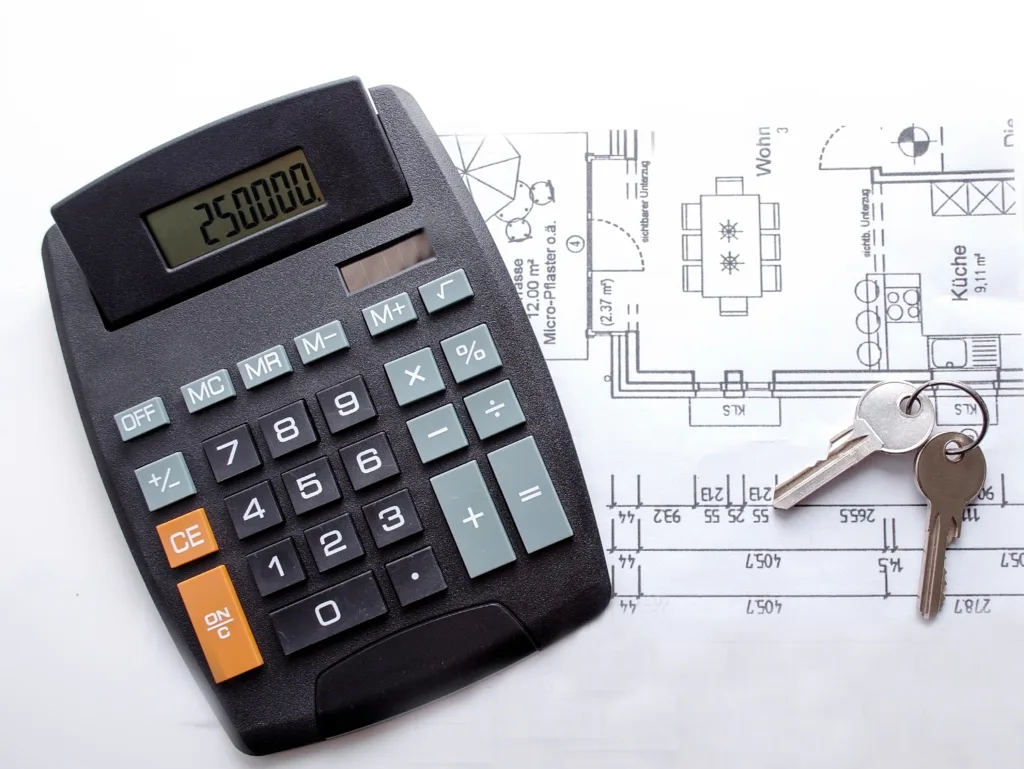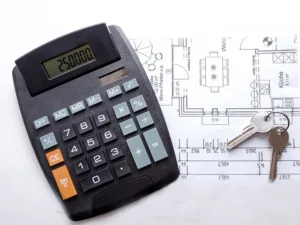Understanding direct and indirect costs in construction is essential for budgeting and managing profitability. Direct costs, like materials and labor, are project-specific. Indirect costs, such as administrative expenses, support multiple projects. This article will explain these costs and how they affect construction projects.
Table of Contents
Key Takeaways
Direct costs in construction include materials, labor, and subcontractor expenses, directly impacting project budgeting and profitability.
Indirect costs, or overhead, support multiple projects and include administrative expenses that need precise allocation for accurate financial assessments.
Effective cost management strategies like using software tools and negotiating contracts are essential for controlling both direct and indirect costs to enhance overall profitability.
What are Direct and Indirect Costs?
Direct and indirect costs are two fundamental categories of expenses in construction projects. Direct costs are those expenses that can be directly attributed to a specific project. These include labor costs, material costs, equipment rentals, and payments to subcontractors. Essentially, direct costs are tangible and directly related to the construction process, making them easier to track and manage.
On the other hand, indirect costs are expenses that are not directly tied to a specific project but are necessary for the overall operation of the business. These costs often include administrative expenses, office rent, utilities, and insurance premiums. Indirect costs are typically intangible and support multiple projects simultaneously, making their allocation more complex. Understanding the distinction between direct and indirect costs is crucial for accurate budgeting and effective financial management in construction projects.
Understanding Direct Costs in Construction
In construction, direct construction costs represent the expenses that can be directly tied to a specific project. These include the costs for materials, wages for laborers on-site, and payments made to subcontractors. Such expenses are pivotal elements in budgeting for construction projects and play a significant role in their financial oversight. Whether it’s remunerating workers or purchasing cement used in building foundations, these types of expenditures are among the most noticeable and essential during the execution phase.
Ensuring precise monitoring of direct costs is fundamental to successful budget management and maintaining robust financial status within a project context. Directly affecting how resources are distributed across various needs within the project scope, these outlays have considerable sway over profitability margins for any given venture. External variables like changes in market prices, availability of supplies needed for construction tasks at hand, efficiency levels achieved by workforces involved with operations onsite as well as logistics related expenditures such as those necessary transporting equipment/materials all stand out aspects capable of potentially swaying final monetary outcomes significantly when considering overall cost assessments associated with completing construction endeavors successfully from an economic standpoint.
1. Examples of Direct Costs
In construction, direct costs constitute an array of expenses. One of the primary components is labor costs, which cover worker wages and associated benefits directly correlated with the time spent on a construction site. Payments to subcontractors are classified as direct costs since they pertain distinctly to certain segments of a project.
Direct costs in construction also include expenditures for renting or acquiring equipment crucial for executing diverse tasks within the project’s scope. Essential building materials such as concrete, steel, and lumber represent notable direct costs that substantially affect the overall budget due to their specific procurement for use in various stages throughout the endeavor and their clear connection to financial outlays on part of projects.
2. Importance of Tracking Direct Costs
It is crucial to manage direct costs effectively within construction projects. Ensuring meticulous monitoring of these expenditures assists in maintaining budget adherence and fosters the financial well-being by averting budget excesses, as well as facilitating prompt remedial measures when necessary. The adept handling of direct expenses not only refines the bidding procedure but also aids in pinpointing troublesome projects and workers, thereby bolstering project management. Accurate project cost estimates are essential for ensuring fair expense assignments and improved project cost estimations.
The precise recording of direct costs unveils opportunities for cost reductions, which can lead to an increase in profitability for the entire project. By acknowledging both direct and indirect costs, one achieves a more accurate projection of total project expenses. This accuracy is fundamental for calculating profit margins that are vital to uphold robust financial management practices essential for sustaining profitable operations.
Exploring Indirect Costs in Construction
Indirect cost in construction refers to expenses that cannot be directly linked to specific construction projects, unlike direct costs which can be directly attributed to a particular project. Indirect costs underpin several projects simultaneously and arise from wider corporate activities. Their role is crucial for maintaining the overall operations of an organization, even though these expenditures do not correlate with specific physical construction tasks.
For precise budgeting of projects, effective cost management, and securing profitability, it’s vital to have a thorough grasp of indirect costs. Variables such as the scale of an enterprise, the quantity of ongoing simultaneous initiatives, and the complexity inherent within those endeavors all affect how one should approach calculating indirect expenses.
The adept handling of these non-direct expenses facilitates equitable allocation among various undertakings. This balance promotes reliable projection figures concerning potential financial demands on a company engaged in building developments and paves the way towards more robust economic performance within this industry sector.
1. Types of Indirect Costs
Indirect costs, also known as project overhead costs, are crucial for the smooth functioning of business operations and aren’t associated directly with a particular construction job. These overhead expenses encompass various necessary expenditures such as administrative wages, supplies for the office, utilities bills, insurance premiums and other project-specific overheads which play an essential role in maintaining a construction business even though they don’t correspond to any individual task.
In the realm of construction businesses specifically, indirect cost examples entail items like rent for office space, compensation for support personnel not assigned to projects on site, depreciation charges on equipment over time, plus fees paid out for requisite permits and licenses. The breadth of General & Administrative (G&A) expenses encompasses routine operational financial requirements from non-project-related staff remuneration to sundry administration-linked disbursements.
2. Why Indirect Costs Matter
Ensuring profitability and competitive bidding in project management necessitates a vigilant approach to handling both direct and indirect costs. Correctly identifying indirect costs is essential for gaining a comprehensive insight into the business’s financial status. Overlooking the accumulation of indirect expenses can have profound effects on the budgetary framework and profit margins of a project.
Consistent monitoring and precise categorization of indirect expenditures are key strategies to averting fiscal discrepancies that lead to budget overruns. Erroneously attributing direct costs as indirect ones may cause substantial errors in financial reporting, which could result in decisions that detrimentally affect sound project management practices.
Differentiating Direct and Indirect Costs
Differentiating between direct and indirect costs is crucial for accurate project budgeting, strategic bidding, and maintaining project profitability. Direct costs are typically straightforward to assign to a specific construction contract. For instance, the cost of concrete used in a building’s foundation or the wages paid to workers on-site are direct costs. These expenses are directly linked to the physical construction activities and can be easily tracked.
In contrast, indirect costs are not directly linked to the physical construction of the project. These costs include administrative salaries, office supplies, and other overhead expenses that support the overall business operations. Indirect costs are essential for the smooth functioning of the company but are not tied to any single project. Understanding the distinction between direct and indirect costs is critical for effective cost management in the construction industry, as it ensures that all expenses are accurately accounted for and allocated.
Factors Affecting Direct and Indirect Cost Calculations
Several factors can impact direct and indirect cost calculations in construction projects. Direct cost calculations can be influenced by market fluctuations, which affect the prices of materials and labor. For example, a sudden increase in the cost of steel can significantly impact the budget for a construction project. Material availability and transportation costs also play a crucial role in determining direct costs. Additionally, labor productivity can vary, affecting the overall labor costs for a project.
Indirect cost calculations, on the other hand, depend on the company’s size, the number of concurrent projects, and the complexity of the projects undertaken. Larger companies with multiple projects may have higher administrative expenses, which need to be allocated across all projects. Changes in government regulations, weather conditions, and unexpected site conditions can also impact both direct and indirect cost calculations. Understanding these factors is vital to creating reliable cost estimates and ensuring successful project outcomes. By considering these variables, construction companies can develop more accurate budgets and improve their financial management practices.
Methods for Allocating Indirect Costs
Ensuring that indirect costs are equitably apportioned among projects through allocation enhances the precision of cost estimates and improves overall financial management. Utilizing a fraction of direct costs, engaging in activity-based costing, or adopting conventional methods reliant on material costs or direct labor hours are typical strategies for allocating indirect costs.
Maintaining uniformity in the selected method for allocating indirect costs is crucial as it guarantees these expenses are consistently and fairly assigned. Employing cost drivers such as square footage or labor hours can facilitate a more precise distribution of indirect costs to various projects.
1. Allocation Techniques
By grouping alike expenses into cost pools, the allocation of indirect costs becomes streamlined, utilizing common drivers for a more effective distribution. For construction firms handling various projects simultaneously, this approach promotes an equitable and uniform allocation of indirect costs across all endeavors.
The assignment of indirect costs to specific projects is crucial for accurate financial analysis. Methods such as activity-based costing and absorption costing aid in meticulously monitoring these expenses to ensure they are precisely incorporated within project financials.
2. Challenges in Allocating Indirect Costs
Effective allocation of indirect costs in construction projects can be compromised by imprecise record-keeping. To circumvent misallocation and guarantee precise project budgeting, it is crucial to maintain proper documentation and conduct consistent expense reviews.
To enhance the precision of allocating indirect costs in construction, establishing various cost pools for categorization purposes can aid the process. Nevertheless, this approach demands meticulous record maintenance and a deep understanding of different cost types—tasks that may prove demanding for firms within the construction sector.
Managing Direct and Indirect Costs for Profitability
Grasping the concepts of direct and indirect costs, along with accurately tracking and allocating construction project costs, is crucial for precise budgeting, adept project management, and maintaining financial health. Competent cost control is vital to safeguard profitability within construction firms. Keeping a close watch on direct costs can spotlight areas where expenses might be reduced, thereby boosting the financial success of a project.
If cost management is not handled properly, it can result in exceeding the allocated budget and diminishing profits. Employing tactics such as securing advantageous agreements with suppliers and implementing cost management systems are effective ways to regulate indirect costs and enhance overall fiscal results.
1. Cost Control Strategies
By engaging in bulk purchasing, negotiating favorable terms with subcontractors, and implementing efficient labor management strategies, it’s possible to substantially lower the direct costs associated with construction projects. Utilizing cost control techniques is advantageous for the construction industry as they can enhance budget monitoring and make procurement more streamlined through specialized software solutions.
Such applications bring together different workflows which improve access to precise project information crucial for informed decision-making. Software designed for estimating offers up-to-date insights on current expenditures against budgets, aiding in maintaining financial discipline while enhancing future cost forecasting capabilities.
2. Impact on Financial Performance
In the realm of construction projects, skillful oversight of direct and indirect costs is pivotal for augmenting profit margins. Mastery in handling these project costs is crucial to elevate a company’s financial performance within the industry and bolster long-term viability. Astutely directing resources toward managing direct expenses can foster more favorable profit margins by diminishing overall project expenditures through adept procurement strategies and labor administration.
Incorrect categorization of costs as either direct or indirect could lead to deceptive financial statements, complicating accurate evaluation of a project’s success. By adroitly navigating between both types of expenses, construction firms are better positioned to amplify their profitability across projects.
Tools and Technologies for Cost Management
Numerous technology and software options play a critical role in efficiently monitoring both direct and indirect costs, offering capabilities for real-time tracking of expenses. This is vital for improving budget control within construction projects.
As an illustration, Bauwise offers integration with accounting systems to facilitate the effective tracking of indirect costs, which aids in maintaining accurate cost management.
1. Project Management Software
Project management tools offer the capability to monitor project expenses as they happen, thus improving financial supervision. This real-time data supports informed decisions during the course of a project and improves expense transparency through organized oversight.
The employment of advanced technology in managing projects fosters more effective control over direct and indirect costs. In turn, this enables project managers to manage budgets more effectively and bolster the overall financial performance.
2. Estimating and Accounting Software
In the field of construction, professionals employ various methods such as utilizing historical cost records, consulting cost databases, leveraging estimation software, and performing material take-offs to accurately estimate direct costs. Project management for a construction venture employs accounting systems that are adept at monitoring both direct and indirect expenses to ensure thorough financial control.
Integrating cash flow management system with existing accounting software can enhance the ability to track costs effectively. Utilizing these sophisticated tools helps in securing precise estimates of both direct and indirect costs within a construction endeavor. This precision plays a crucial role in bolstering sound financial stewardship and enhancing the overall profitability of projects.
3. Data Analytics
By examining historical cost data and identifying trends through predictive analytics, potential financial excesses can be foreseen. Tools for data analytics offer in-depth scrutiny of expenditure habits, which assists in the formulation of strategic financial plans. Such tools expose spending tendencies within projects, facilitating strategic modifications to budgets and forecasts to keep project costs under control.
The adept employment of data analytics supports enlightened decision-making processes that result in timely alterations to the budget, thus improving both the fiscal performance and management of projects.
Common Mistakes in Cost Management
Mistakes in managing costs can have a substantial effect on the economic well-being of construction projects. It is common to incorrectly label costs or overlook indirect expenses.
To prevent these common errors, it’s essential to set forth explicit protocols for recording costs and consistently scrutinize financial records related to expenditures.
1. Mislabeling Costs
Ensuring precise categorization of costs is essential because various accounting systems permit different levels of reimbursement depending on how costs are classified. Keeping thorough records helps prevent issues related to the incorrect assignment of indirect costs, which can result in improper reimbursement amounts, thereby impacting the financials of both contractors and clients.
2. Ignoring Indirect Costs
Indirect costs play a crucial role in supporting numerous construction projects, encompassing expenditures like administrative and overhead fees. It’s critical to have a firm grasp of these indirect costs in construction to maintain the overall financial health of such projects. Challenges that often arise include subpar record-keeping and misconceptions about the various expenses included.
If indirect costs are overlooked, it can result in flawed budget forecasts for projects and poor financial stewardship. Conducting routine evaluations of indirect construction costs is instrumental in keeping projects on track with their budgets, thereby achieving their intended financial goals.
Summary
Mastering the management of both direct and indirect costs is essential for successful project management within a construction company. Costs that are directly attributable to specific projects, such as labor, materials, and equipment use, fall into the category of direct costs. On the other hand, indirect costs encompass expenditures like office rent and administrative tasks that are not tied to one particular project but support the operations across multiple ventures within a firm. Ensuring these expenses are tracked precisely and allocated properly is critical in achieving accurate cost estimates for each project while maintaining overall financial well-being.
To boost profitability on projects and secure business longevity, it’s important for those in construction professions to adopt robust cost control measures alongside embracing advancements in technology meant to assist with this process—thereby steering clear from typical pitfalls associated with managing finances. Periodic reassessment of how funds are spent—and making sure there’s an exact breakdown between direct and indirect expenditures—is part of strategic financial stewardship which leads toward improved fiscal outcomes over time for any given enterprise.
Frequently Asked Questions
1. What are direct costs in construction projects?
Direct costs in construction projects are expenses explicitly linked to the project, including labor, materials, and subcontractor payments. Understanding these costs is crucial for accurate budgeting and project management.
2. Why is it important to track direct costs accurately?
It is critical to meticulously monitor direct costs in order to maintain control over the budget and prevent any excesses, thereby enhancing the profitability of a project and uncovering potential avenues for reducing expenses.
3. What are some common examples of indirect costs in construction?
Construction indirect costs include expenses such as administrative wages, the rent for office space, utility bills, insurance premiums, and depreciation of equipment.
Recognizing these expenditures is essential to developing a precise budget for construction projects.
4. How can construction companies allocate indirect costs effectively?
Construction companies can effectively allocate indirect costs by utilizing methods such as cost pooling, activity-based costing, or traditional approaches that factor in direct labor hours or material costs. This ensures accurate financial management and resource allocation.
5. What are some common mistakes in cost management that construction companies should avoid?
To avoid errors in cost management, construction companies should ensure accurate labeling of costs to prevent incorrect reimbursements and pay attention to indirect costs, as neglecting them can lead to significant budget inaccuracies. These precautions are essential for effective financial oversight.
About the Author

Taavi Kaiv
Taavi Kaiv is a construction specialist with over ten years of experience in the construction industry. Taavi is an accomplished construction project manager with many successful projects that have been completed under his guidance. Taavi holds a master’s degree in construction management from the Tallinn University of Technology. View profile






